Greek Salad (Classic Horiatiki)
This recipe may contain Amazon or other affiliate links. As an Amazon Associate I earn from qualifying purchases.
This Greek Salad is an easy and refreshing Mediterranean salad recipe with crunchy vegetables, creamy feta cheese, and tangy red wine salad dressing. It only takes 15 minutes to make, so there’s no excuse not to try it now.
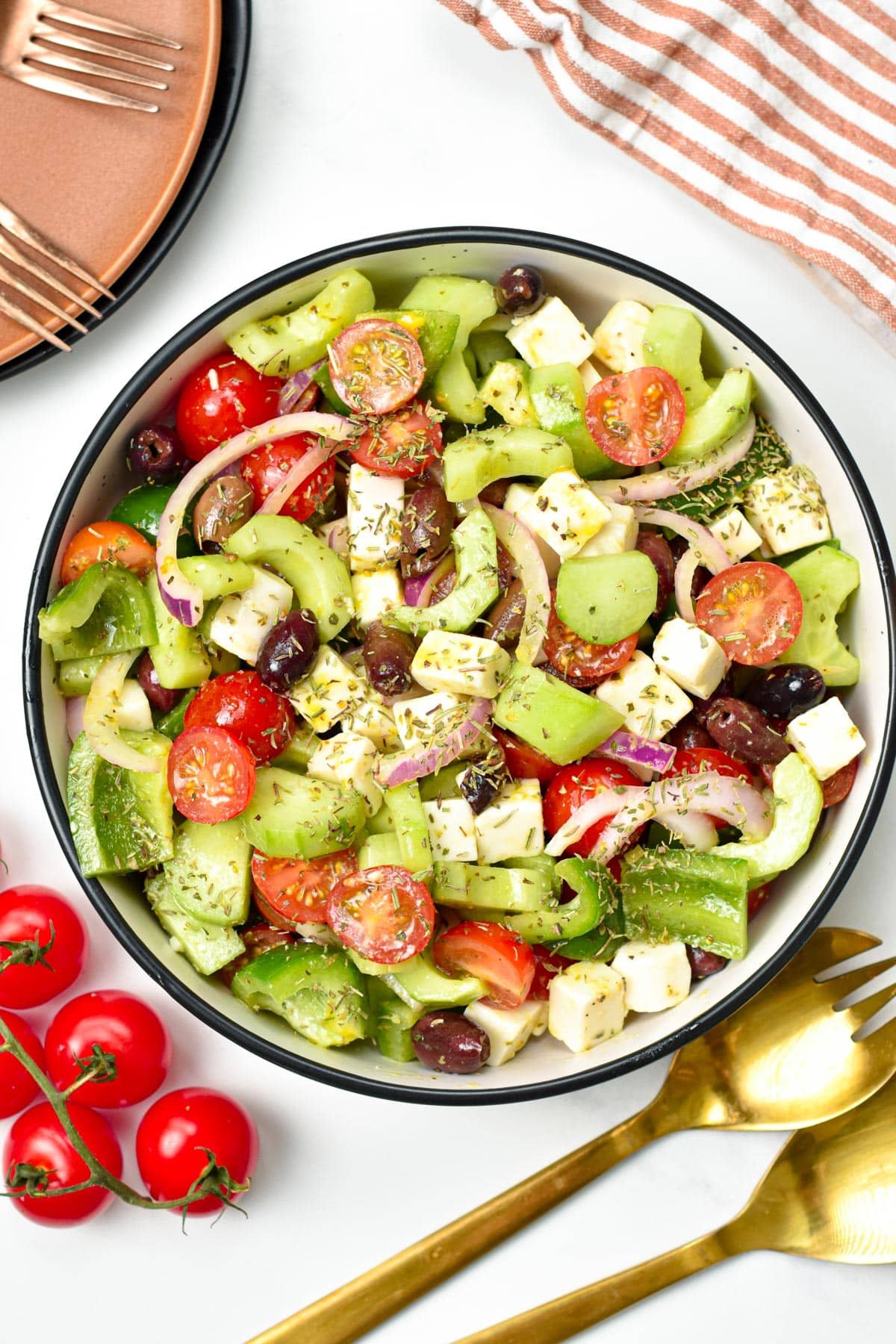
If you love the flavorsome, simple, and healthy recipes from Greece, you’ll love this Mediterranean diet Greek salad. Greek Salad, or Horiatiki salad, is a fresh and tasty meal full of healthy ingredients.
Its Greek name Horiatiki means “from a village” because it’s made from locally-sourced Mediterranean ingredients such as tomatoes, feta cheese, cucumber, onions, and olives. While there’s a classic Greek Salad recipes, there are a number of equally traditional local variations that were made throughout Greece.
Some with added lettuce, some with watermelon, and even some with beans. Here’s my favorite way of making this vegetarian salad.
The full recipe is just below but don’t miss my ingredient selection tips, storage instructions, and detailed step-by-step tips.
Did You Like This Recipe?
Leave a comment below or head to our Facebook page for tips, our Instagram page for inspiration, our Pinterest for saving recipes, and Flipboard to get all the new ones!
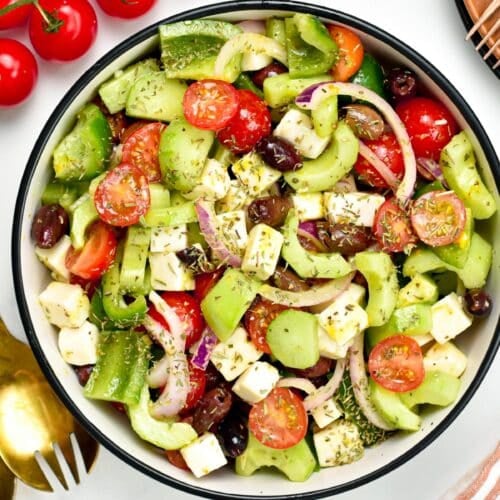
Greek Salad Recipe
Ingredients
- 1 Cucumber peeled, deseeded, cut into half-moon 1/4-inch slices
- 1 ½ cup Cherry Tomatoes halves
- ½ medium Red Onion Sliced
- 1 Green Bell Pepper deseeded, cut in 1-inch pieces
- ½ cup Kalamata Olives pitted
- 4 ounces Feta cubed
Greek Salad Dressing
- 4 tablespoons Olive Oil
- 3 tablespoons Red Wine Vinegar
- ½ teaspoon Dried Oregano
- 1 teaspoon Dijon Mustard
- 1 Garlic Cloves crushed
- ⅛ teaspoon Pepper
- ¼ teaspoon Salt
Instructions
- Wash all vegetables under cold tap water. Peel cucumber, cut it in half lengthwise, then use a teaspoon to scrape out the center.
- Cut the cucumber into half-moon shapes with a 1/4-inch thickness. Set aside in a salad bowl.
- Slice the red onion finely and add it to the bowl along with halved cherry tomatoes.
- Deseed the green bell pepper, cut them into 1-inch pieces, and add them to the bowl.
- Add feta cubes and whole kalamata olives to the bowl. Set aside.
- In a small bowl, whisk all the Greek salad dressing ingredients.
- Pour dressing over the vegetable and toss to combine.
- Serve immediately with dried oregano or dried thyme, extra olive oil, or chili flakes.
Storage
- Store leftovers for up to 2 days in a sealed container in the fridge or up to 3 days if the dressing is stored aside.
Tools
Getting Started What Is Keto? Macro Calculator Sweetener Converter Intermittent Fasting Keto Fruits Keto Vegetables Keto Flours Fighting Keto Flu Healthy SweetenersWant My Kitchen Equipment?
Nutrition
Ingredients and Substitutions
Here’s what you need to make this salad:
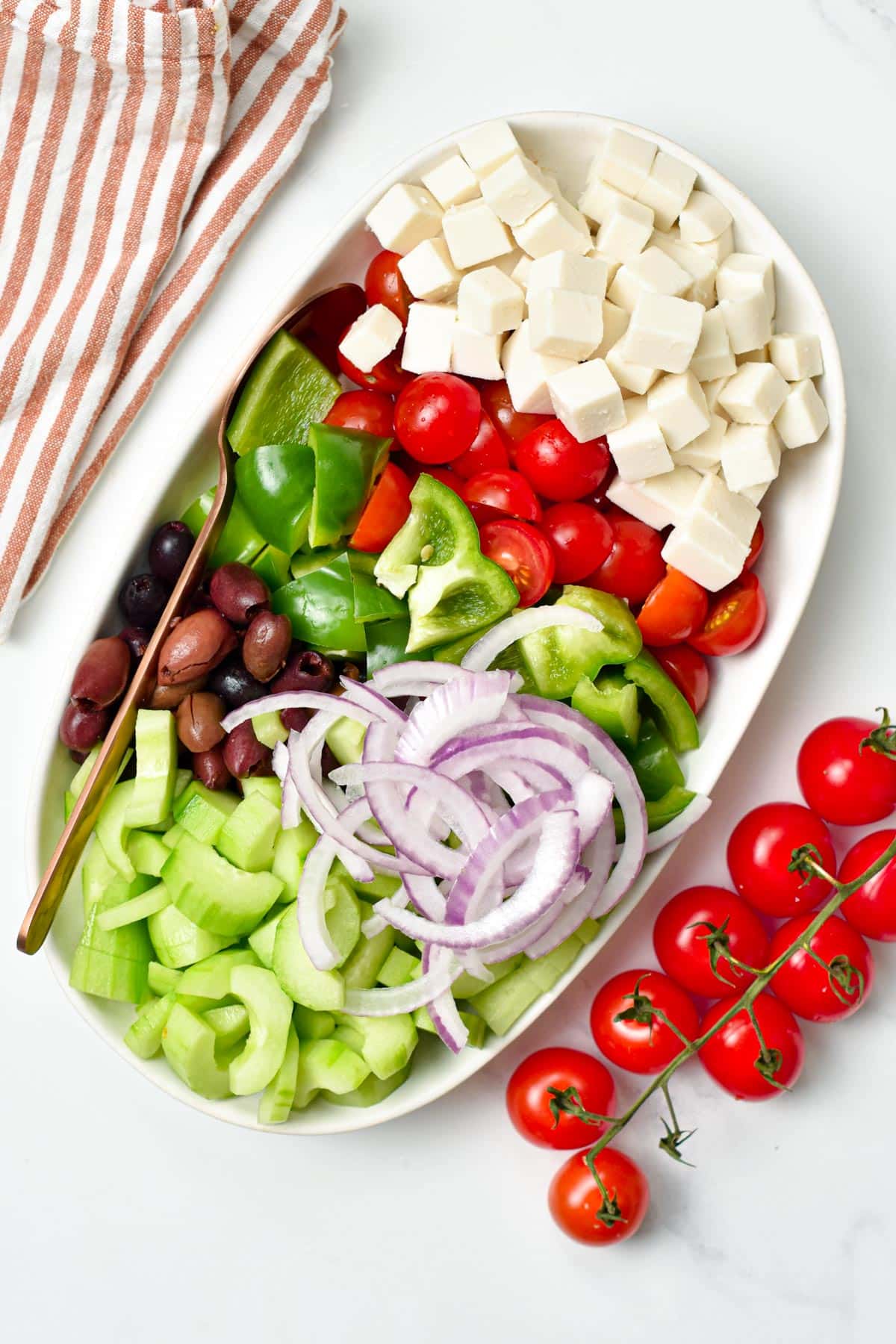
- English Cucumber – Peeled, deseeded, and cut in half moons. You can keep the skin or cut the cucumber in different shapes, but I love the large chunks of cucumber in salads.
- Cherry Tomatoes or large grape tomatoes cut into quarters. Make sure they are ripe and juicy tomatoes for a great taste.
- Red Onions – You can also use shallots if you prefer.
- Green Bell Pepper deseeded and cut into 1-inch cubes.
- Kalamata Olives – The purple and soft kind of olives. They are less bitter than black olives and are typical in Greek recipes.
- Feta Cheese cubed. You can use a dairy-free alternative if you prefer.
- Olive Oil – I use extra-virgin olive oil.
- Red Wine Vinegar – I recommend red wine vinegar for the salad dressing for its sweet flavor, but you can also use lemon juice if preferred.
- Dried Oregano – or rosemary.
- Garlic Cloves – peeled and crushed
- Salt And Pepper – season to taste.
- Dijon Mustard – or English mustard.
How To Make Greek Salad
It’s super easy to make a traditional Greek salad, and it’s the best light side dish to any grilled meat or vegetable. What is hard is creating a fantastic salad, and it always starts with the freshness of the vegetables.
Pick fresh, hard, and crunchy vegetables, clean them under cold water, and cut them into the shapes recommended in the recipe. In fact, the shapes of vegetables in a salad impact their taste. Too big or too small, and their flavor changes.
- Cut the crisp cucumbers into half moons. Peel and deseed them so they don’t get too crunchy and watery.
- Cut the bell peppers into 1-inch cubes.
- Slice the red onion finely into half moons.
- Keep the olives whole. Don’t cut them.
- Slice the Feta cheese into cubes. Don’t crumble, or it will mix with the salad dressing and make it too creamy.
- After preparing all the vegetables, place them in a large bowl. Set aside in the fridge while preparing the dressing.
- Place all the dressing ingredients in a bowl and stir to combine. You can also make some of my other delicious dressing recipes, like my Avocado Salad Dressing or Keto Italian Dressing.
- Pour the dressing over the salad bowl just before serving.
- Toss to coat the vegetables evenly with the salad dressing.


Serving Suggestions
Serve the salad with extra fresh herbs like:
- Fresh Basil or fresh dill
- Fresh Mint
- Chili Flakes for a spicy touch
- Ground Pepper
This Greek salad is delicious on its own as a light meal but way better served with some meat or roasted vegetables like:
- Cast-Iron Chicken Breast
- Blackened Chicken
- Roasted Rutabagas
- Roasted Cauliflower
- Whole Roasted Cauliflower
- Greek Fries
- Baked Pork Chops
Another option is to use the salad in a Gyros recipe along with grilled chicken or to fill a pita bread or Moroccan Bread.
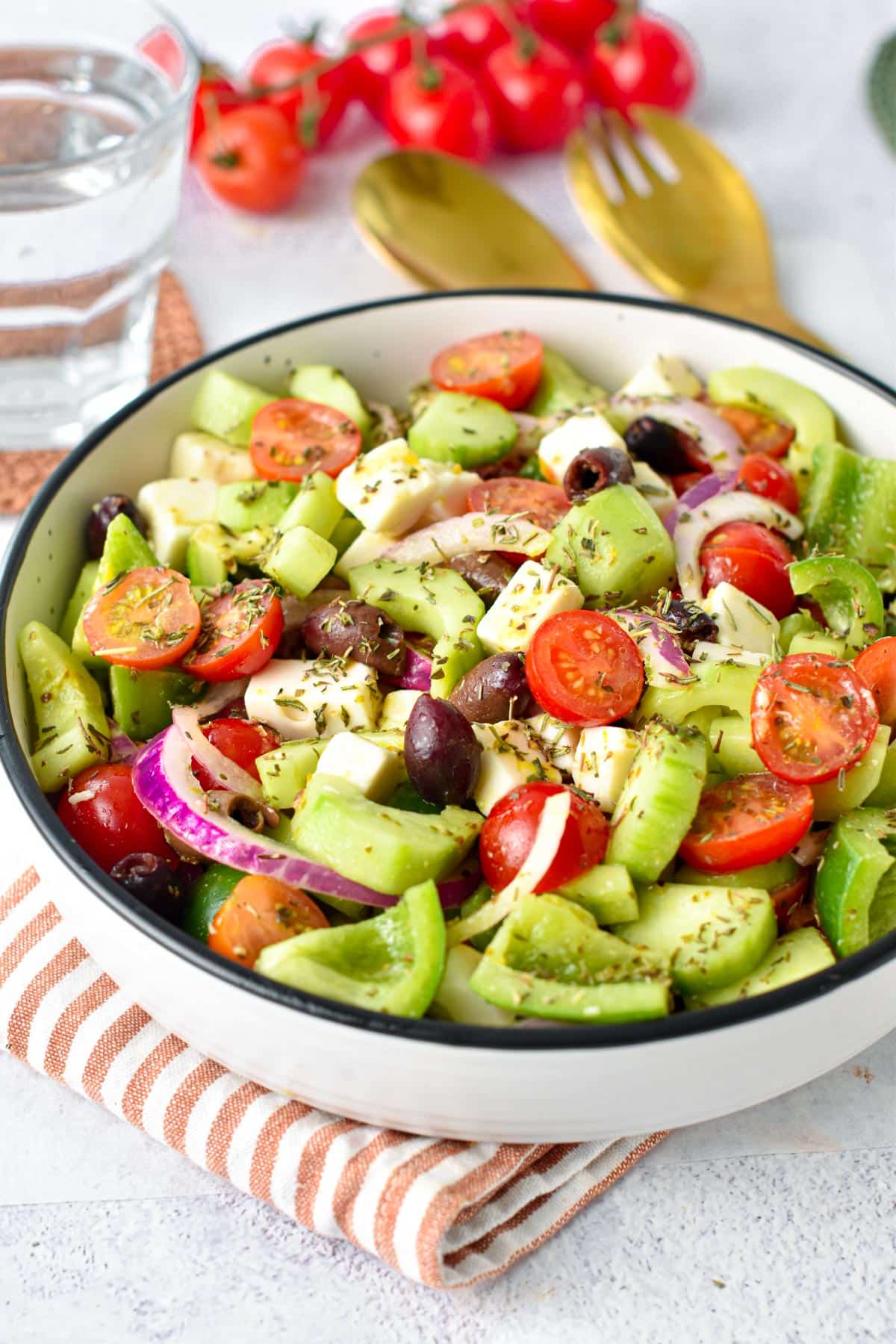
Storage Instructions
This Greek salad is better fresh or eaten within two days because the salad dressing softens the vegetables with time. Store leftover salad in an airtight container in the fridge.
Another idea, if you want to keep the salad fresh for longer or meal prep meals with it, is to keep the salad dressing on the side. Store the salad dressing aside in a sealed glass mason jar and drizzle on the salad just before eating.
Variations
You can create a huge range of Greek salad recipes, using this as a base and swapping or adding vegetables of your choice. The best additions to this salad are:
- Grilled Zucchini
- Roasted Red Bell Pepper
- Avocado
- Roasted Eggplant
- Greek Yogurt Salad – Add 2-3 tablespoons of Greek yogurt to the dressing for a creamy salad dressing.
- Greek Orzo Pasta Salad – Stir in 2-3 cups of cooked orzo in the salad.
- Greek Pasta Salad – follow my Greek Pasta Salad recipe.
Allergy Swaps
If you are allergic to some of the ingredients, you can use some of the following substitutions:
- Dairy-Free – You can skip the feta, use dairy-free feta alternatives, or fresh, pressed tofu cubes instead.
- Red Wine Vinegar can be replaced with lemon juice.
- Low-FODMAP – Remove the red onion and garlic.
Frequently Asked Questions
Below are my answers to your most common questions about this recipe.
You can of course swap the kalamata olives for green or black pitted olives. However, keep in mind that these other options are a bit more bitter.
Yes, Greek salad is one of the healthiest salad as it’s low carb and the dressing is made with healthy monounsaturated fats from olive oil.
More Salad Recipes
If you like this recipe, you’ll love these other healthy salad recipes:
Disclaimer
The recipes, instructions, and articles on this website should not be taken or used as medical advice. You must consult with your doctor before starting on a keto or low-carb diet. The nutritional data provided on Sweetashoney is to be used as indicative only.
The nutrition data is calculated using WP Recipe Maker. Net Carbs is calculated by removing the fiber and some sweeteners from the total Carbohydrates. As an example, a recipe with 10 grams of Carbs per 100 grams that contains 3 grams of erythritol and 5 grams of fiber will have a net carbs content of 2 grams. Some sweeteners are excluded because they are not metabolized.
You should always calculate the nutritional data yourself instead of relying on Sweetashoney's data. Sweetashoney and its recipes and articles are not intended to cure, prevent, diagnose, or treat any disease. Sweetashoney cannot be liable for adverse reactions or any other outcome resulting from the use of recipes or advice found on the Website.
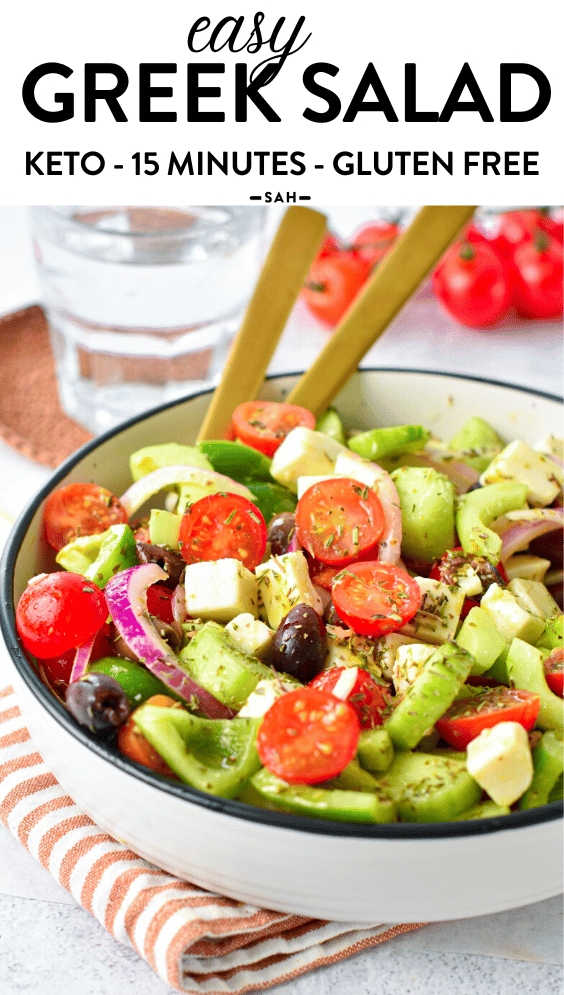
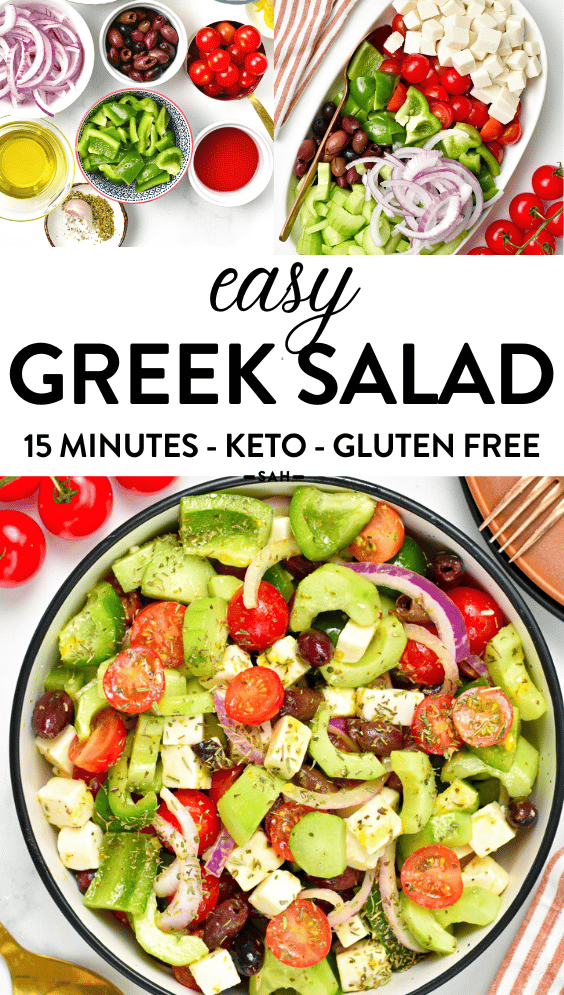







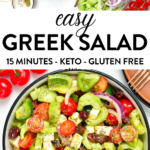
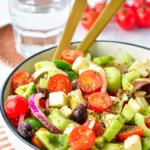
Share this post!
If you enjoyed this post, share it with your close ones!
Leave a comment